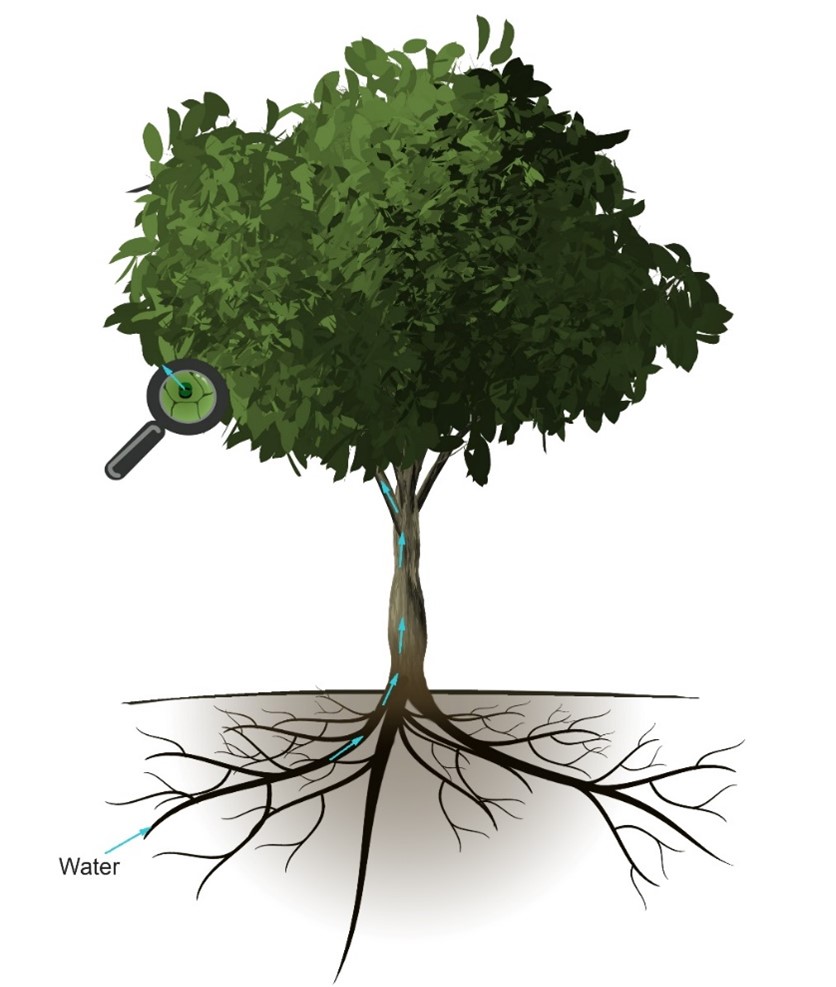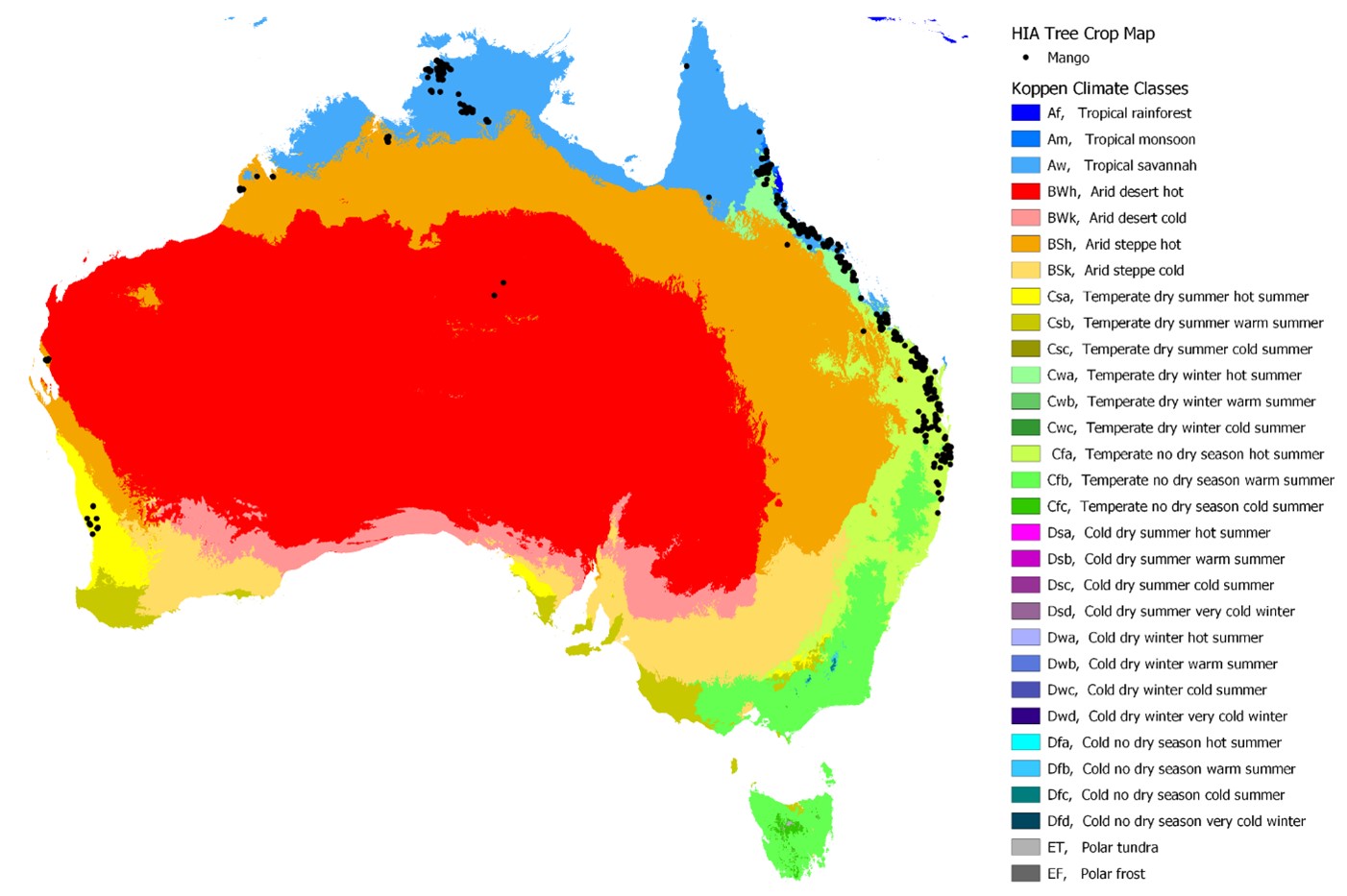Plant-water relationship and the effects of water stress
Irrigation is critical to the success of mango production in Australia. Since mangoes are grown in a variety of different climates, irrigation best practice differs across Australia and designing appropriate irrigation systems in any given region requires an understanding of the relationship between water and mango trees.
Mangoes are considered to be drought-hardy plants, sustained by as little as 635mm of rain per year if the rainfall is evenly spread across the year. They have adapted to drought through a number of strategies including a deep root system and “desiccation-tolerant” surface feeder roots. Where the distribution of rainfall or irrigation is uneven, water deficits can occur, which can negatively impact fruit production and the growth of young trees.
Mango trees have both shallow feeder roots and deep taproots. The feeder roots occupy the soil surface primarily in the top 10-30cm, but they can run as deep as 80cm and to a radius of around 3m from the tree. In comparison, the taproots grow up to 6m down into the soil profile.
Irrigation of mango plants targets the feeder roots, with most of the water and nutrient uptake occurring in these roots except during drought conditions when the taproot acts as the main feeder source. Nutrient uptake requires live, healthy roots. In general, the shallow feeder roots associated with nutrient uptake grow best in the soil profile which is the most favourable- moist soil will have more root growth than hard, dry soil that is not fertilised.
Figure 1: The movement of water through the plant begins at the roots, travels through the plant and out through stomata in the leaves.
Water is absorbed into the plant via the roots and moves up through the plant and out the leaves based on a water potential gradient from low to high. This gradient can increase or decrease based on environmental conditions or demand from the tree. Periods of low humidity or high temperatures can increase the gradient. Cloudy, wet conditions will reduce the gradient, and when the stomata are closed there is no water loss through the leaves. The uptake of water through tree roots can also be impacted by soil type and root health.
In mangoes, water availability can impact fruit weight, number, and quality, as well as leaf and root growth.
Table 2. The effects of water stress on mangoes depends on the timing, and extent of water deficiency.
| Stage | Effect |
| Vegetative growth | Water stress during this stage can reduce vegetative growth. |
| Pre-flowering | Before flowering, mild water stress may promote flower induction in some mango varieties and regions. Reducing irrigation pre-flowering is a common practice in the Northern Territory used to increase flower induction. (Read the research on mild pre-flowering stress) |
| Pre-flowering and flowering | If not managed correctly, greater levels of water stress prior to and during flowering can cause a decline in fruit set and retention. |
| Fruit development | During fruit development, water stress can cause a reduction in fruit weight. Manipulating dry matter through water stress can impact fruit size and subsequently market prices. |
| General | In general, plant stress promotes pests and diseases in the orchard. |
Figure 2. Location of mango orchards in Australia with climate regions. Mapping source: HIA Tree Crop Map, State of Queensland 2017; Beck, et al. 2018.


